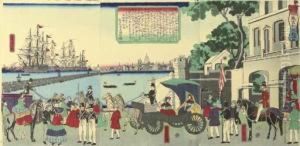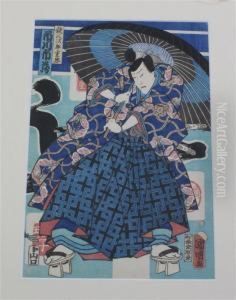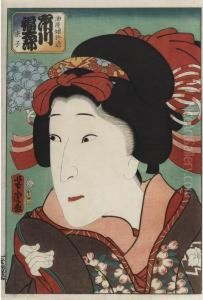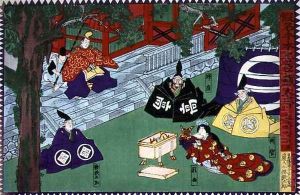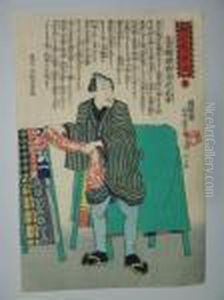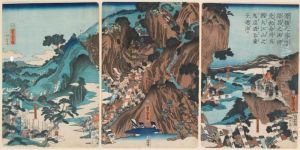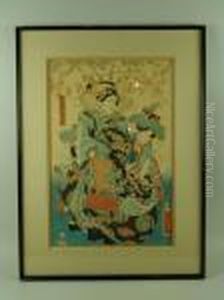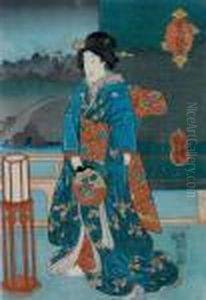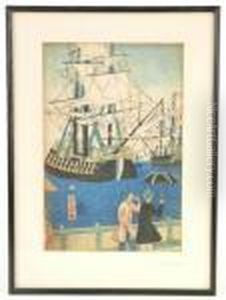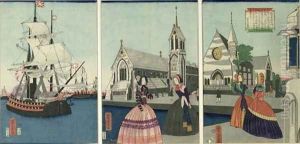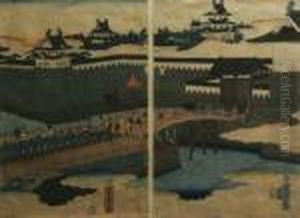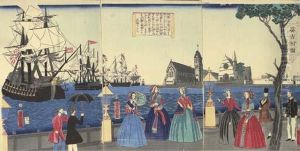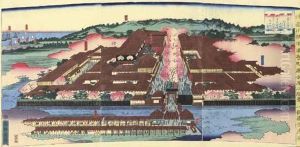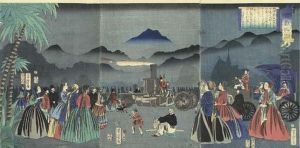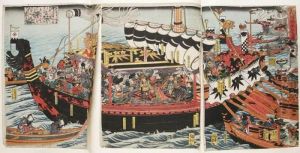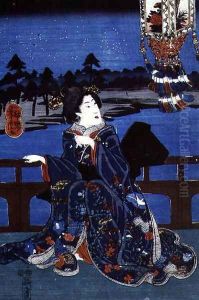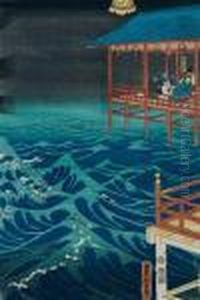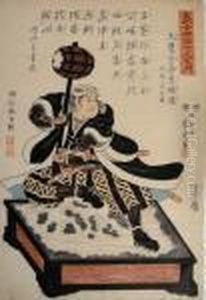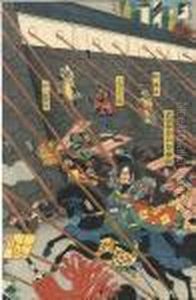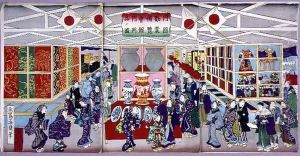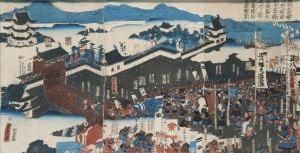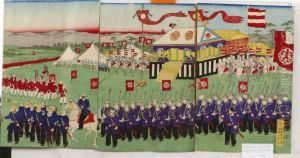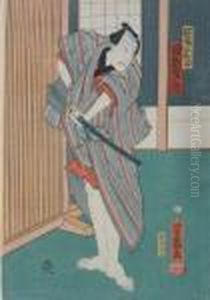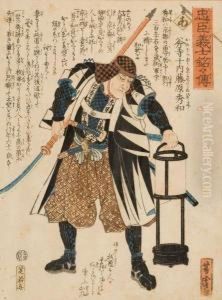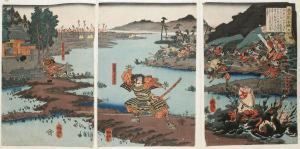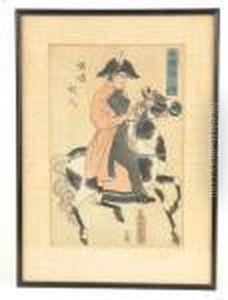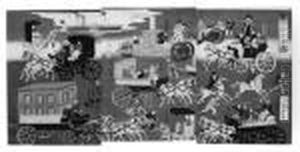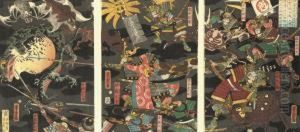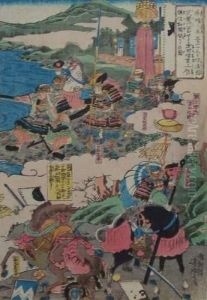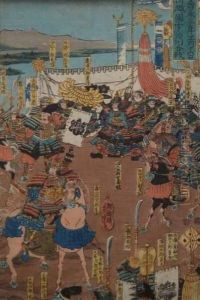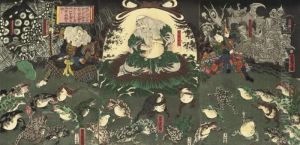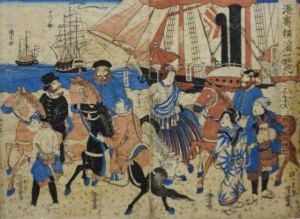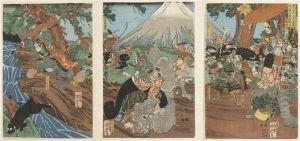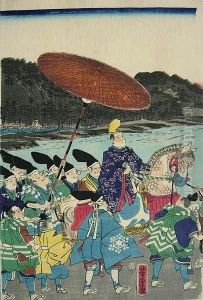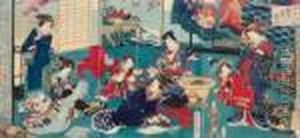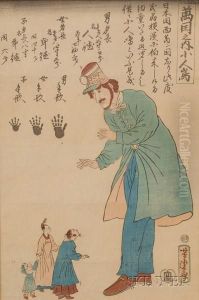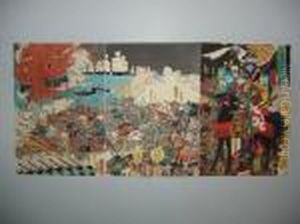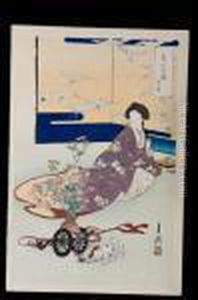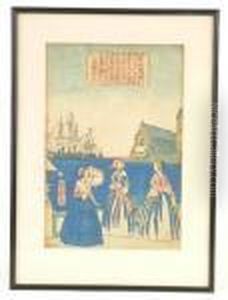Utagawa Yoshitora Paintings
Utagawa Yoshitora was a Japanese ukiyo-e artist who was active during the late Edo and early Meiji periods. He was a student of the Utagawa school, one of the most influential schools of Japanese woodblock printing, under the tutelage of Utagawa Kuniyoshi, who was one of the last great masters of the ukiyo-e genre of woodblock printing. Yoshitora is primarily known for his prints of samurai, historical scenes, and depictions of foreigners — one of the unique subjects that differentiated him from many of his contemporaries.
Yoshitora's works provide valuable insights into the transitional period of Japan as it opened to the West. During the Bakumatsu period, which marked the end of the Tokugawa shogunate and the restoration of imperial rule, Yoshitora created a number of prints that illustrated foreigners and their customs, reflecting the curiosity and apprehension with which Japanese society viewed the outside world at the time.
Despite Yoshitora's extensive work and contribution to ukiyo-e, details about his life, including his birth and death dates, are scarce. It is believed that he began his career as an artist in the 1850s and continued to produce works until at least the 1880s. His last known works date to the early Meiji period when Japan was undergoing rapid modernization and westernization.
Yoshitora's artistic output included a wide range of subjects, from traditional Japanese tales and kabuki actors to landscapes and news illustrations. His series of prints depicting scenes from Japan and other countries, titled 'Mangoku Taiheiki' (A Chronicle of Many Countries), is particularly noteworthy. These prints are significant for their detailed rendering of foreign scenes and figures, showcasing Yoshitora's imaginative interpretation of the wider world.
The fact that Yoshitora's exact birth and death years remain unknown adds an element of mystery to his legacy. Nonetheless, his works are still celebrated for their historical and artistic value, offering a window into a pivotal moment in Japan's history as it encountered and adapted to global influences.
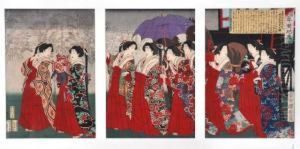
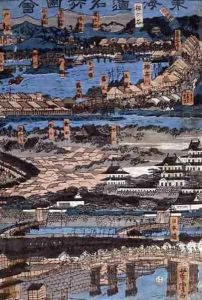
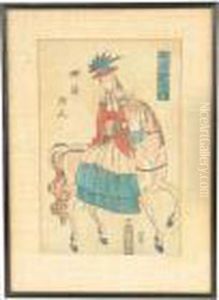
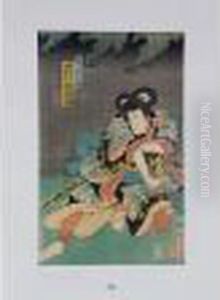
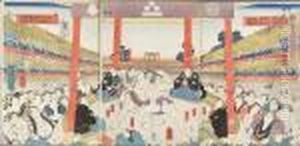
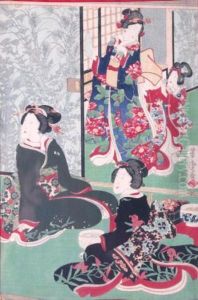
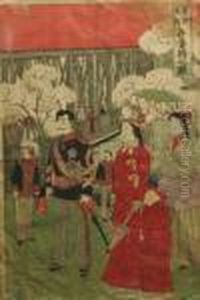
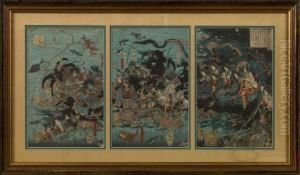
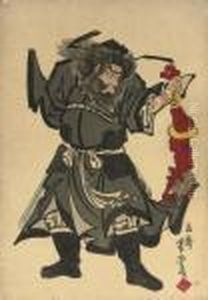
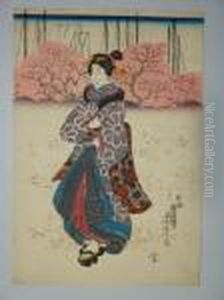
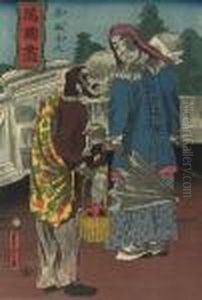
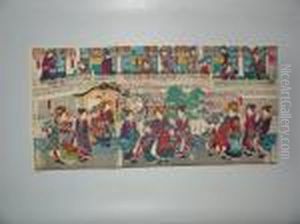
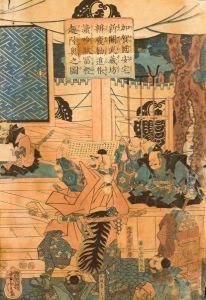
![Shichifukujin (seven Gods Of Good Fortune [at The Koguro Paper Company, Yokohama])](https://www.niceartgallery.com/imgs/1707463/s/utagawa-yoshitora-shichifukujin-seven-gods-of-good-fortune-at-the-koguro-paper-company-yokohama-de74c4a4.jpg)
